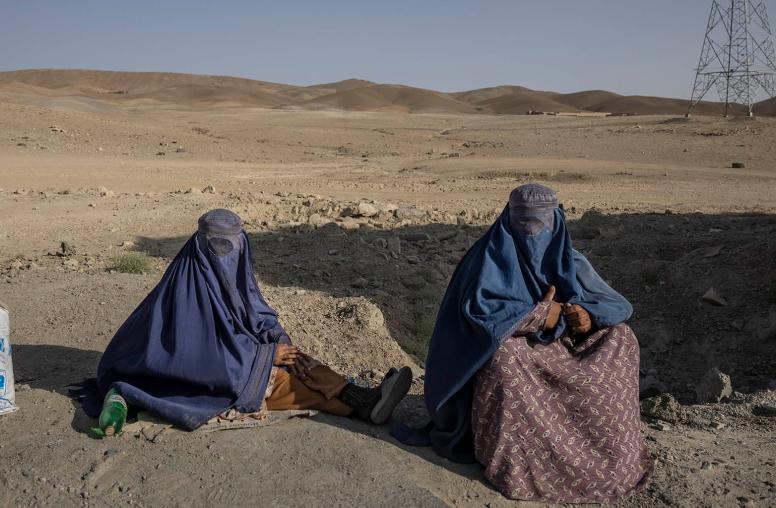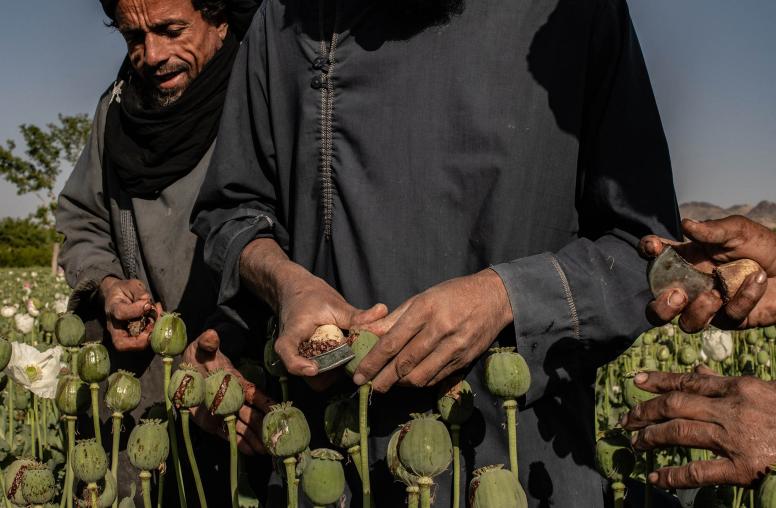After al-Zawahiri’s Killing, What’s Next for the U.S. in Afghanistan?
His location in Kabul suggests a form of Taliban sanctuary, undermining the regime’s claims to cutting ties with transnational terrorists.
On Monday, President Biden revealed that a U.S. drone strike killed al-Qaida leader, and mastermind of the 9/11 attacks, Ayman al-Zawahiri over the weekend. Al-Zawahiri was reportedly on the balcony of a safe house in Kabul, Afghanistan. Last week, the United States participated in a regional conference in Tashkent, Uzbekistan focused on counterterrorism, where Taliban Foreign Minister Amir Khan Muttaqi said his regime had followed through on commitments to not allow Afghanistan to be used as a base for transnational terrorism. Al-Zawahiri’s presence in Kabul seemingly undercuts Muttaqi’s remarks and the Taliban’s supposed promise to cut ties with groups like al-Qaida. It also complicates discussions held last week between Taliban and U.S. officials on unfreezing Afghan Central Bank assets, which could help ease Afghanistan’s humanitarian crisis.

USIP’s Asfandyar Mir, Andrew Watkins and Kate Bateman discuss al-Zawahiri’s legacy, what his killing tells us about the Taliban and the ramifications for U.S. counterterrorism and Afghanistan policy.
What is al-Zawahiri’s legacy?
Mir: Ayman al-Zawahiri was routinely downplayed as a terrorist threat by analysts and policymakers, especially compared to his charismatic predecessor Osama bin Laden. But a closer look at al-Qaida’s trajectory suggests that he managed to steer the group against the tide of American drone strikes and weathered the competition of a formidable rival jihadist group in ISIS. Today al-Qaida affiliates in East Africa and the Sahel region are on the march. Al-Zawahiri also managed to preserve al-Qaida’s historic strategic partnership with the Taliban despite enormous international and military pressure on the Taliban to break from the group — evidenced clearly in al-Zawahiri having sanctuary in the heart of Kabul under the protection of the Taliban’s senior most leadership.
So, al-Zawahiri leaves behind for his successor a stronger and arguably more dangerous organization for the rest of the world than the one Bin Laden left behind for him back in 2011.
What does al-Zawahiri’s killing tell us about the Taliban?
Watkins: Al-Zawahiri’s location in downtown Kabul strongly suggests some form of Taliban sanctuary, even if this may have been unofficial. U.S. officials quoted in the press have pointed to the notorious Haqqani network, long accused of close ties with al-Qaida, as al-Zawahiri’s hosts. In one sense, his killing only confirms the consensus view of the Haqqanis and their relationships with transnational terror groups.
Within the Taliban, it is difficult to gauge opinion regarding al-Qaida, or how their members feel about providing the group support even if it poses serious risks to their continued rule over Afghanistan. The elder generation, their current leadership, certainly remembers the hardships their group endured since the United States invaded Afghanistan and toppled the Taliban in late 2001, prompted by al-Qaida’s 9/11 attacks. However, the ensuing 20 years of U.S.-NATO intervention hardened many Taliban against Western nations and has driven many younger Taliban closer to the propaganda and online communities of global jihadism. What is almost certain is that the Taliban’s rank and file will view confirmation of the U.S. drone strike as a gross violation of the Taliban’s sovereignty and an embarrassing example of their group’s weakness.
In high-level meetings and diplomatic statements, the Taliban continue to refer to the U.S. obligations under the Doha Agreement (which they signed in February 2020 with the United States), which demands the Taliban withdraw support for any groups seeking to harm the U.S. or its allies — specifically naming al-Qaida. The circumstances of al-Zawahiri’s death reveal the Taliban to be in grave violation of the agreement they continue to press the United States to abide by. Moreover, acting Minister of Interior Sirajuddin Haqqani, leader of the eponymous network, has sought over the past year to persuade foreign diplomats of his stature as a reasonable, pragmatic interlocutor on a number of policy issues, including girls’ education. This revelation may make many donor nations uncomfortable with the idea of continued engagement with Haqqani. It will also reaffirm the concerns of Afghanistan’s neighbors and regional powers, that terrorism might begin to emanate from across the country’s borders.
What does this mean for U.S. policy on Afghanistan?
Bateman: In their approach to the de facto Taliban government, U.S. policymakers have sought to walk a thin line: engage the Taliban on humanitarian, rights and governance issues that matter to Washington, while seeking to mitigate the risk that this very engagement further legitimizes the still-reprehensible Taliban as a government.
But the United States has had to accept the fact that even this minimal diplomatic engagement has the effect of normalizing, to some degree, the Taliban government. The tradeoff was that engagement has facilitated U.S. assistance to alleviate the enormous humanitarian and economic crises, and kept a channel open to the Taliban, to push for respect for women’s and human rights, inclusive governance — and potentially in the future, some form of counterterrorism cooperation.
The al-Zawahiri strike — demonstrating Taliban leaders’ apparent ongoing willingness to harbor al-Qaida — puts that tradeoff in sharp relief. It will now be far more difficult for the United States and other countries to justify pragmatic engagement with the Taliban. If the Taliban’s abusive and repressive policies had already killed hopes that their second turn at governance would be any different from the first, now, their blatant violation of their counterterrorism commitments in the February 2020 Doha Agreement sets them on a course toward again becoming a pariah regime.
Most urgently, U.S. policymakers and counterterrorism analysts must revisit their assessments of the terrorist threat in Afghanistan. The successful U.S. strike vindicates those who’ve argued for an over-the-horizon counterterrorism strategy in Afghanistan. But al-Zawahiri finding harbor in Kabul may also point to a graver threat than was assumed.
Second, U.S. officials must urgently explore options for alleviating Afghan suffering that do not rely on engagement with or facilitation by the Taliban regime. Recent U.S. steps toward unfreezing Afghan Central Bank assets, which were meant to help ease Afghanistan’s cash liquidity crisis and support resumption of normal economic activity, now face even more uncertainty. Lessons from the delivery of humanitarian assistance during the Taliban’s 1996-2001 regime should be revisited.
What does this mean for U.S. counterterrorism policy?
Mir: While al-Zawahiri’s killing is an important counterterrorism operational success, the overall strategic picture emerging from enduring al-Qaida-Taliban association is bad news for the U.S. government, which has been wanting to pivot away from the fight against terrorism toward strategic competition with China and Russia. It appears the U.S. government still faces formidable terrorist adversaries who are able to exploit grievances, alliances and state support to recover from losses and stay in the fight. America can’t afford to take the eye off its terrorist adversaries. Confronting them before they metastasize is essential to preventing terrorist group provocations from materializing — and in turn remaining focused on strategic competition in the long run.



